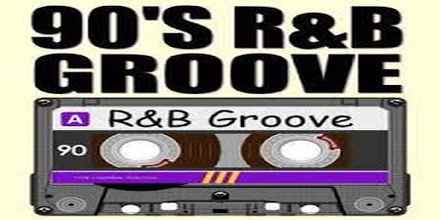The 1990s was a decade of immense diversity and innovation in music, characterized by the convergence of various genres and the emergence of new styles that would define popular culture for years to come. The era saw the rise of grunge, alternative rock, hip-hop, pop, electronic dance music (EDM), and more, each contributing to a rich tapestry of sounds that resonated with audiences worldwide.
Grunge, originating from the Pacific Northwest, particularly Seattle, became one of the defining genres of the 90s. Bands like Nirvana, Pearl Jam, Soundgarden, and Alice in Chains brought raw, emotive rock music to the mainstream, blending elements of punk, heavy metal, and classic rock. Nirvana's "Nevermind" (1991) is often credited with breaking grunge into the mainstream, with songs like "Smells Like Teen Spirit" becoming anthems for a generation disillusioned with the excesses of the 80s.
Alternative rock also flourished in the 90s, with bands like Radiohead, The Smashing Pumpkins, and Red Hot Chili Peppers pushing the boundaries of what rock music could be. Radiohead's "The Bends" (1995) and "OK Computer" (1997) are often cited as masterpieces that blended art rock, experimental music, and traditional rock structures. The Smashing Pumpkins' "Siamese Dream" (1993) showcased the band's knack for crafting intricate, layered songs that combined heavy guitars with melodic sensibilities.
Hip-hop continued to evolve and gain mainstream acceptance in the 90s. The East Coast-West Coast rivalry between rappers like Tupac Shakur and The Notorious B.I.G. dominated headlines, but the decade also saw the rise of other influential artists such as Dr. Dre, Snoop Dogg, and Wu-Tang Clan. Dr. Dre's "The Chronic" (1992) introduced G-funk to the world, a style that blended P-funk with gangsta rap, while Wu-Tang Clan's "Enter the Wu-Tang (36 Chambers)" (1993) brought a unique blend of martial arts-inspired lyrics and hardcore beats.
Pop music in the 90s was marked by the dominance of boy bands and girl groups. Groups like Backstreet Boys, *NSYNC, Spice Girls, and Destiny's Child captured the hearts of millions with their catchy hooks and polished performances. Britney Spears and Christina Aguilera emerged as solo artists, each bringing a unique style that would influence pop music for decades.
Electronic dance music (EDM) also gained significant traction in the 90s. The rave culture of the late 80s and early 90s gave way to a more mainstream acceptance of electronic music, with artists like The Prodigy, The Chemical Brothers, and Daft Punk leading the charge. The Prodigy's "The Fat of the Land" (1997) featured the iconic track "Breathe," which combined breakbeats, samples, and aggressive vocals to create a sound that was both futuristic and primal.
The 90s also saw the rise of Britpop, a movement that emerged in the UK as a reaction against the dominance of American grunge. Bands like Oasis, Blur, and Pulp brought a sense of swagger and nostalgia to their music, drawing inspiration from classic British rock bands like The Beatles and The Kinks. Oasis' "Definitely Maybe" (1994) and "(What's the Story) Morning Glory?" (1995) are often cited as defining albums of the Britpop era.
In addition to these major genres, the 90s also saw the emergence of other influential styles. Trip-hop, a genre that blended hip-hop beats with downtempo electronics and atmospheric textures, gained prominence with artists like Massive Attack and Portishead. Jazz fusion continued to evolve, with artists like Miles Davis pushing the boundaries of what jazz could be in albums like "Doo-Bop" (1992).
The 90s was also a decade of significant technological advancements in music production. The rise of digital audio workstations (DAWs) and sampling technology allowed producers to create complex, layered tracks with ease. This led to a proliferation of remixes and mashups, as well as the emergence of new sub-genres within existing styles.
In conclusion, the 90s was a decade of incredible musical diversity and innovation. From grunge and alternative rock to hip-hop, pop, EDM, and beyond, the music of the 90s continues to influence and inspire artists today. The decade's blend of raw emotion, experimentalism, and mainstream appeal created a rich sonic landscape that will be remembered for generations to come.
 3.3k
3.3k
 6
Germany, Hamburg 90s 128 kbps MP3
6
Germany, Hamburg 90s 128 kbps MP3 2.6k
Russia, Moscow 90s 128 kbps MP3
2.6k
Russia, Moscow 90s 128 kbps MP3








































